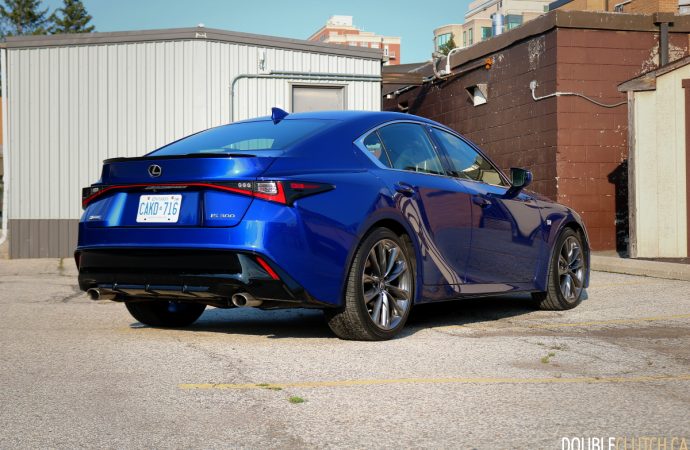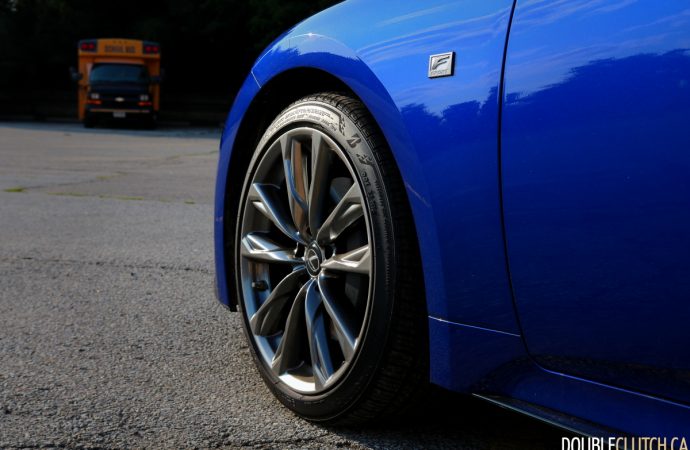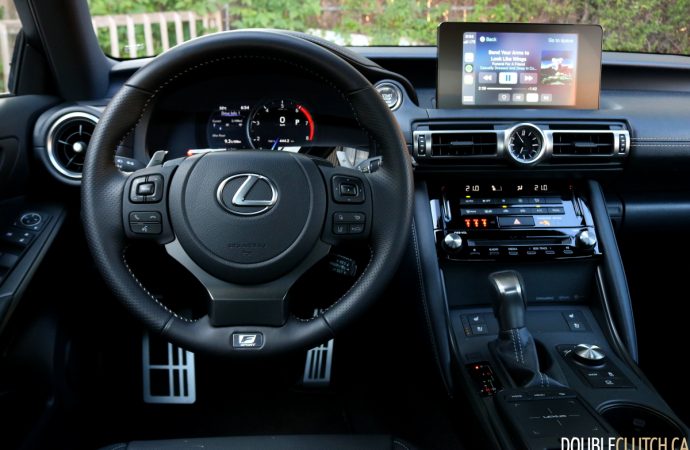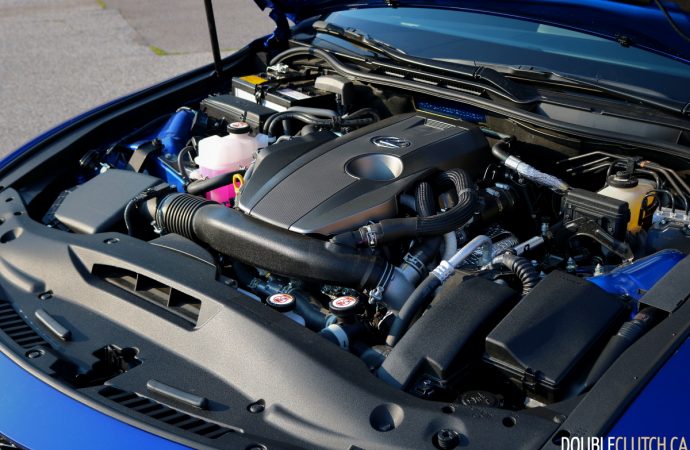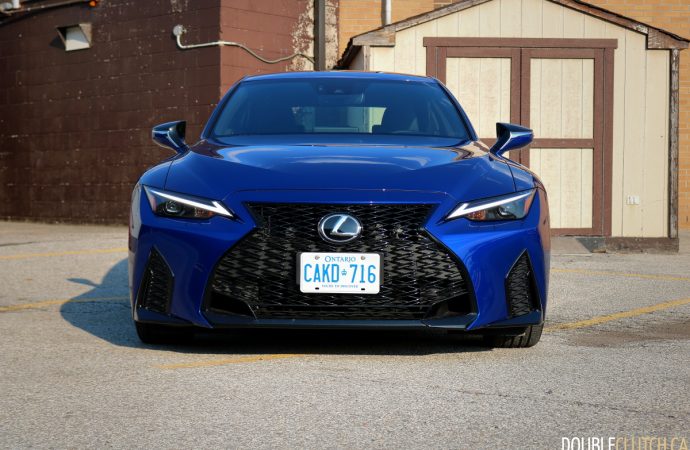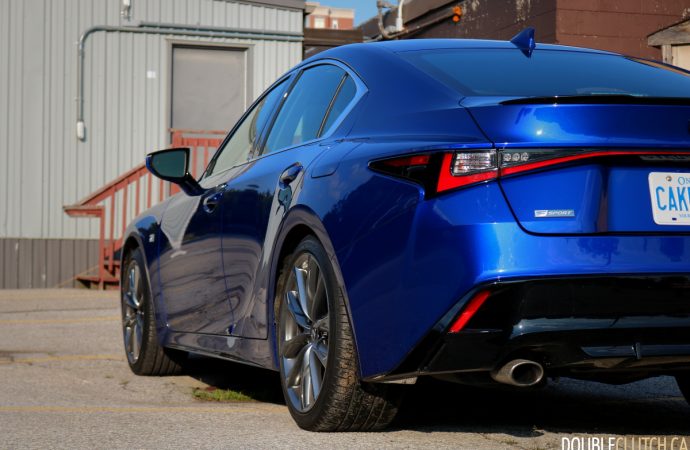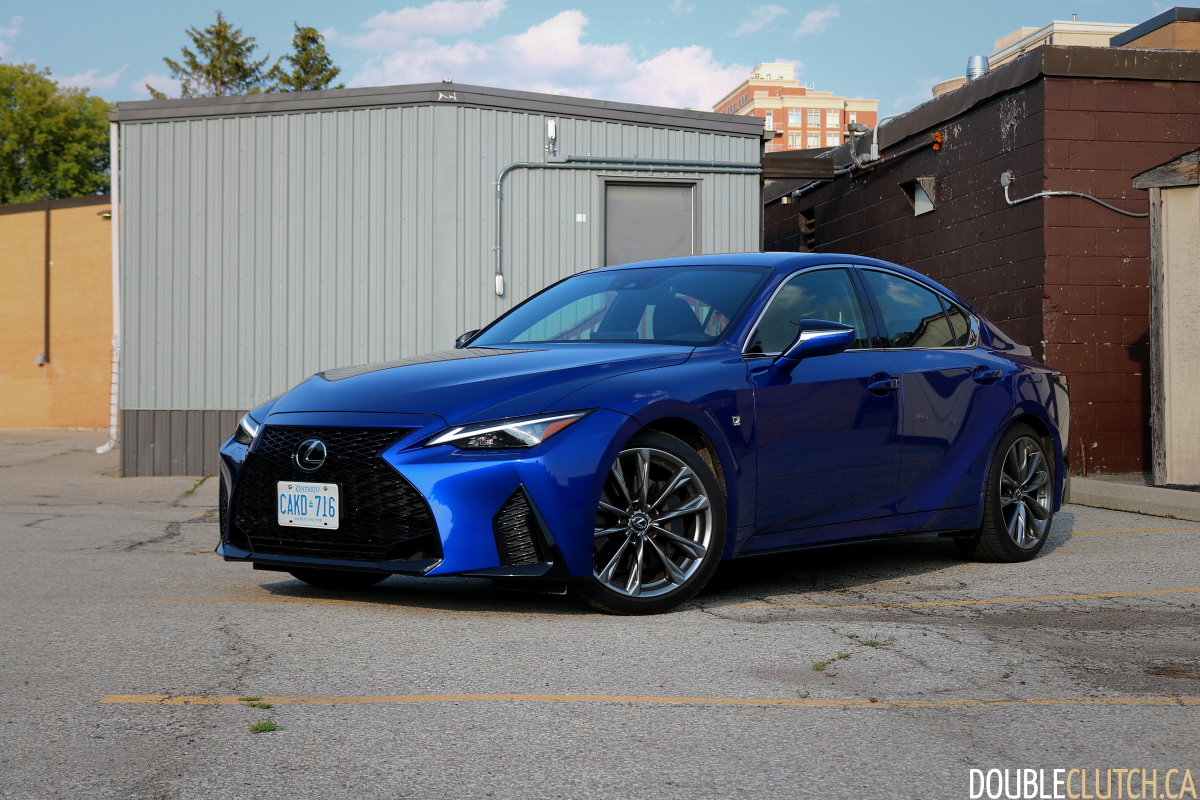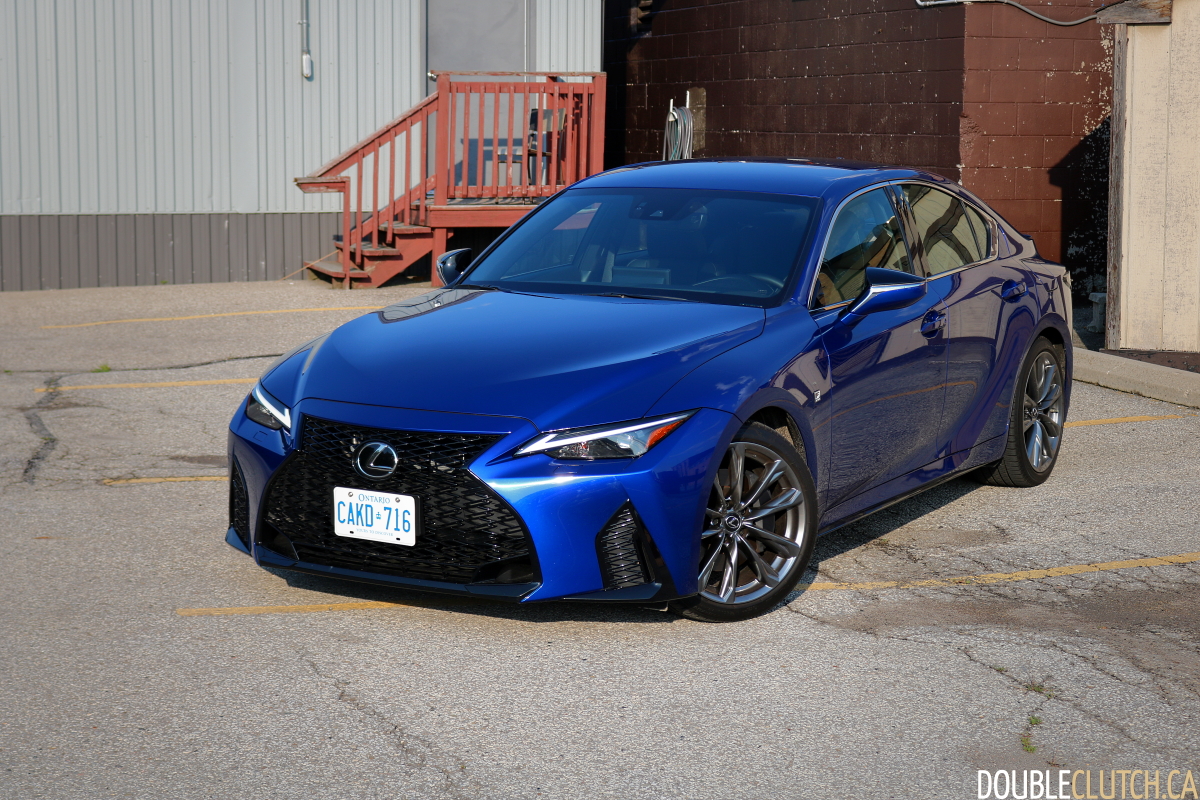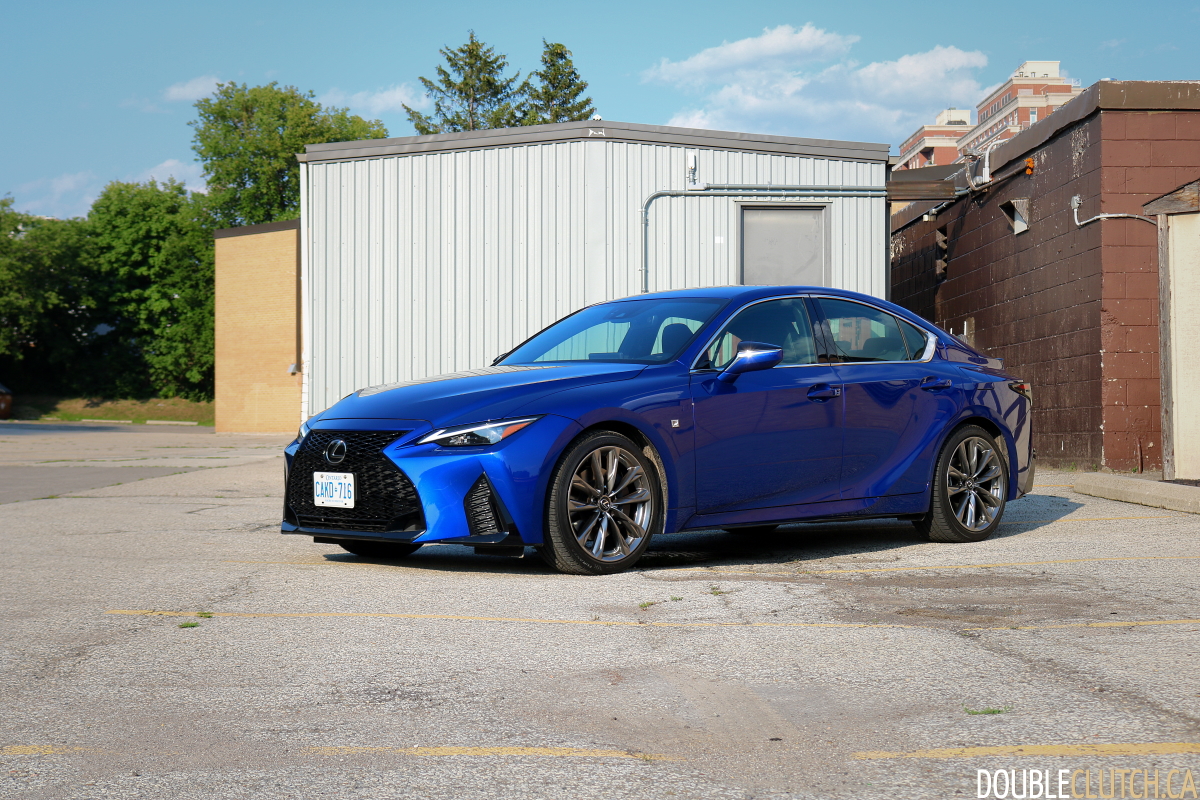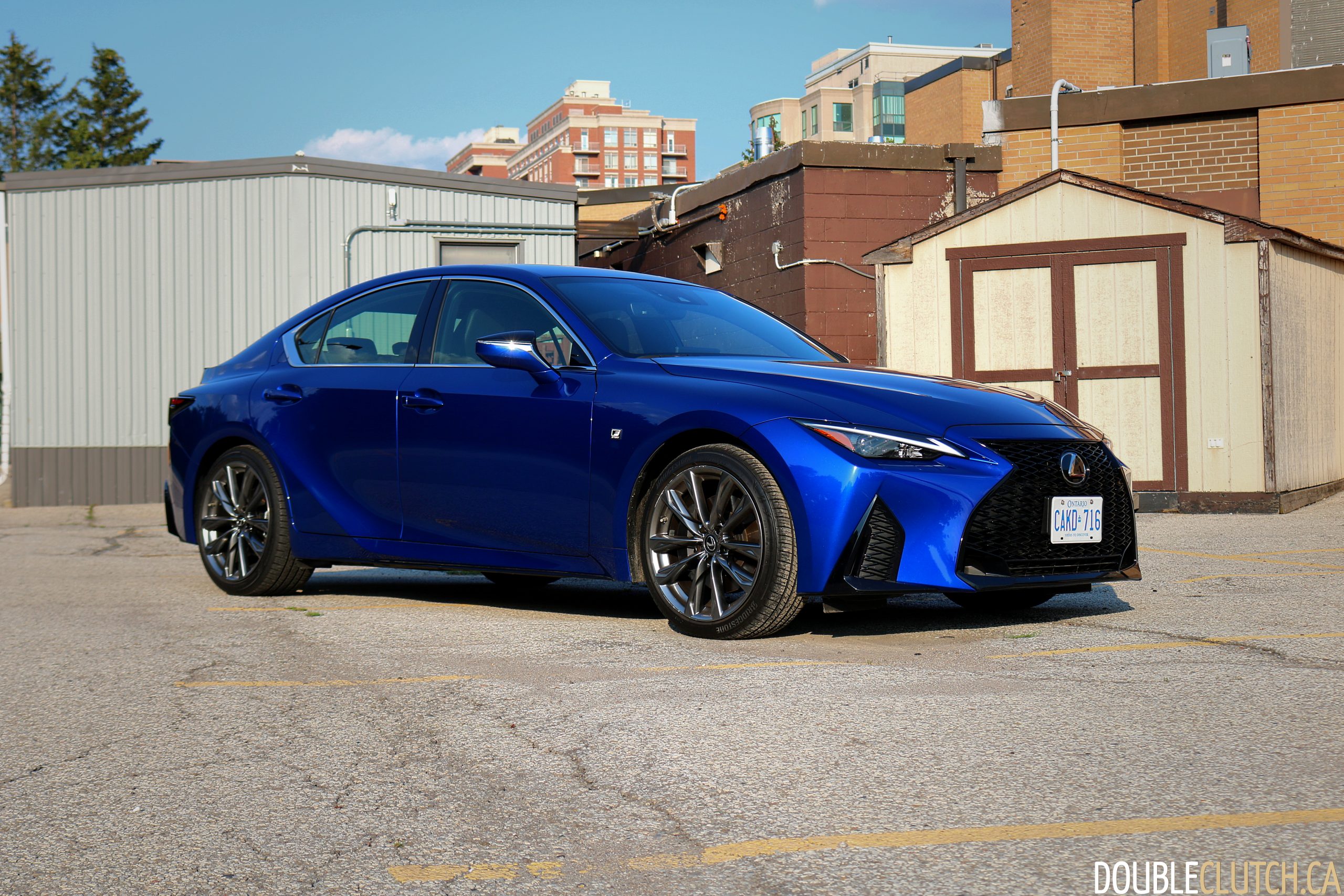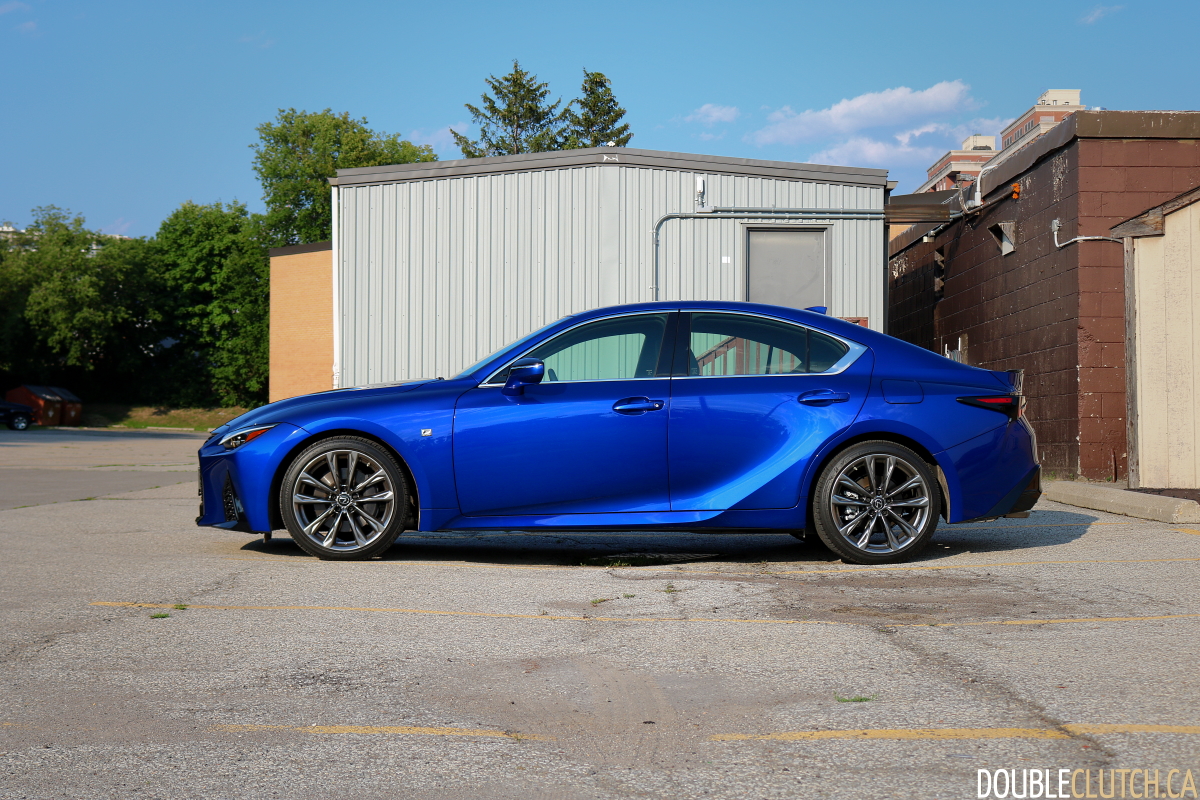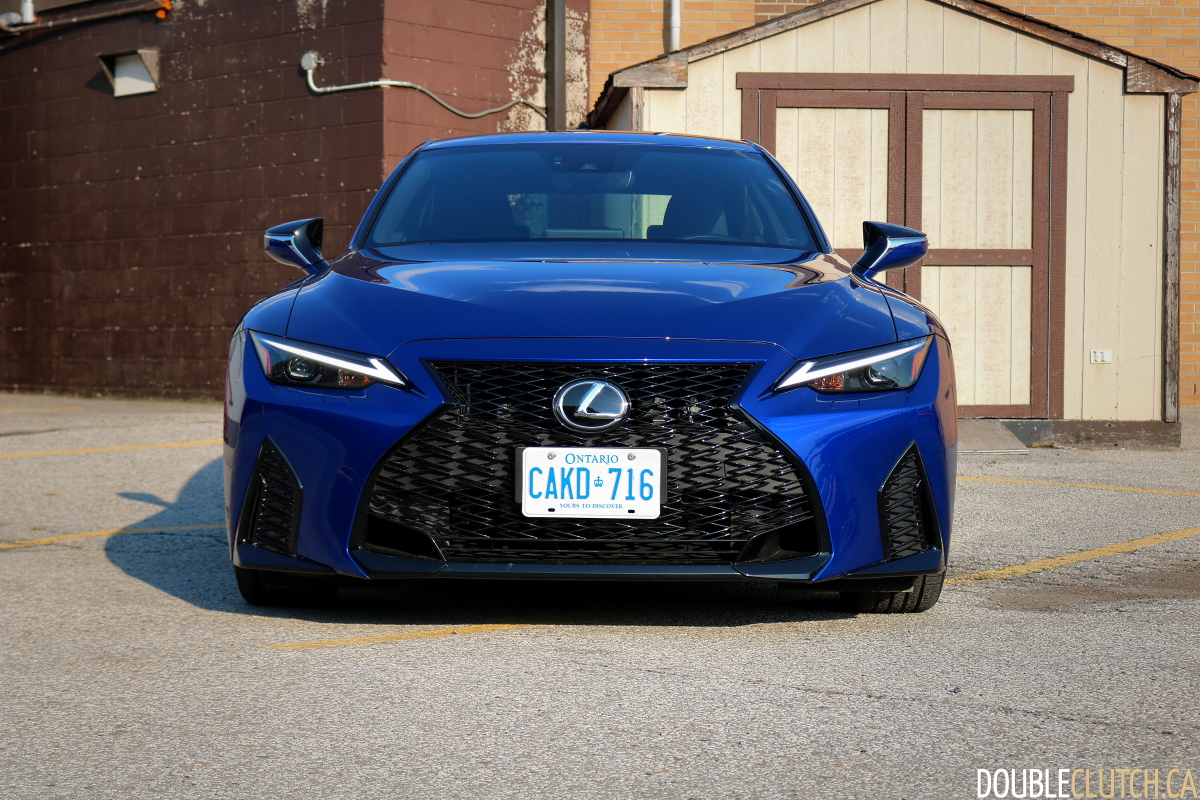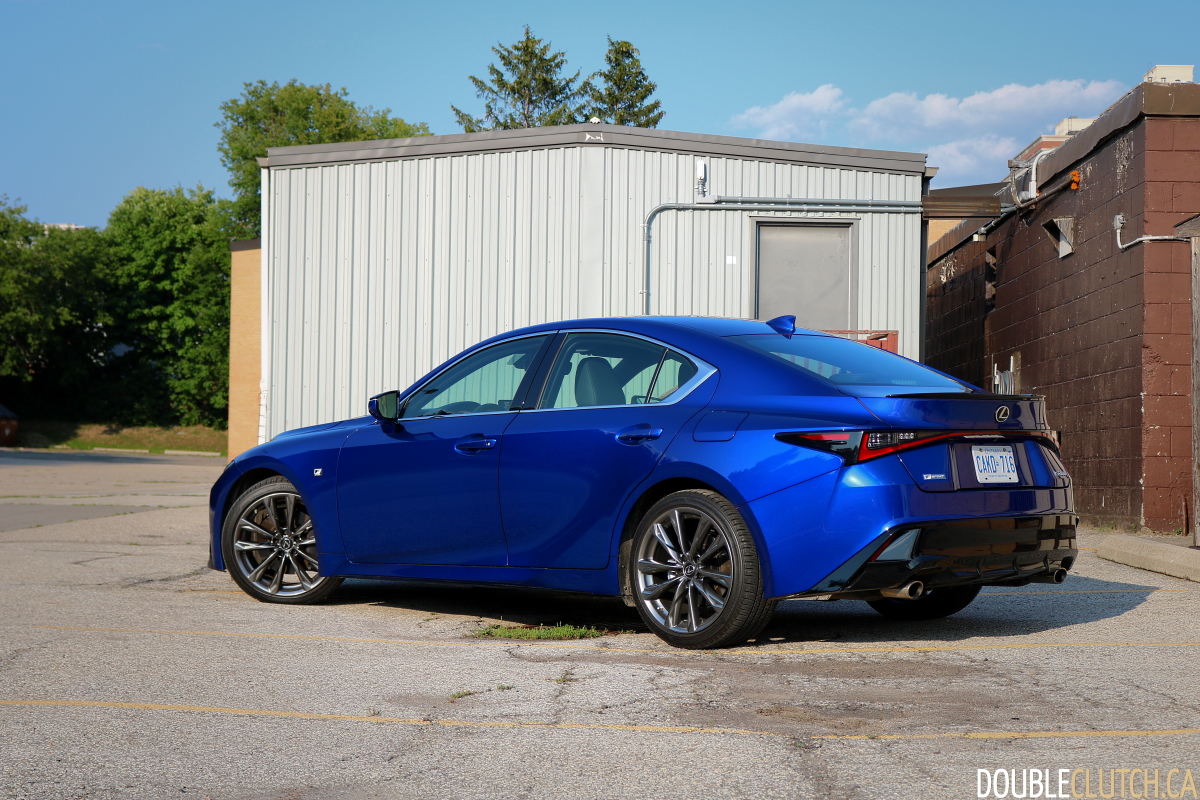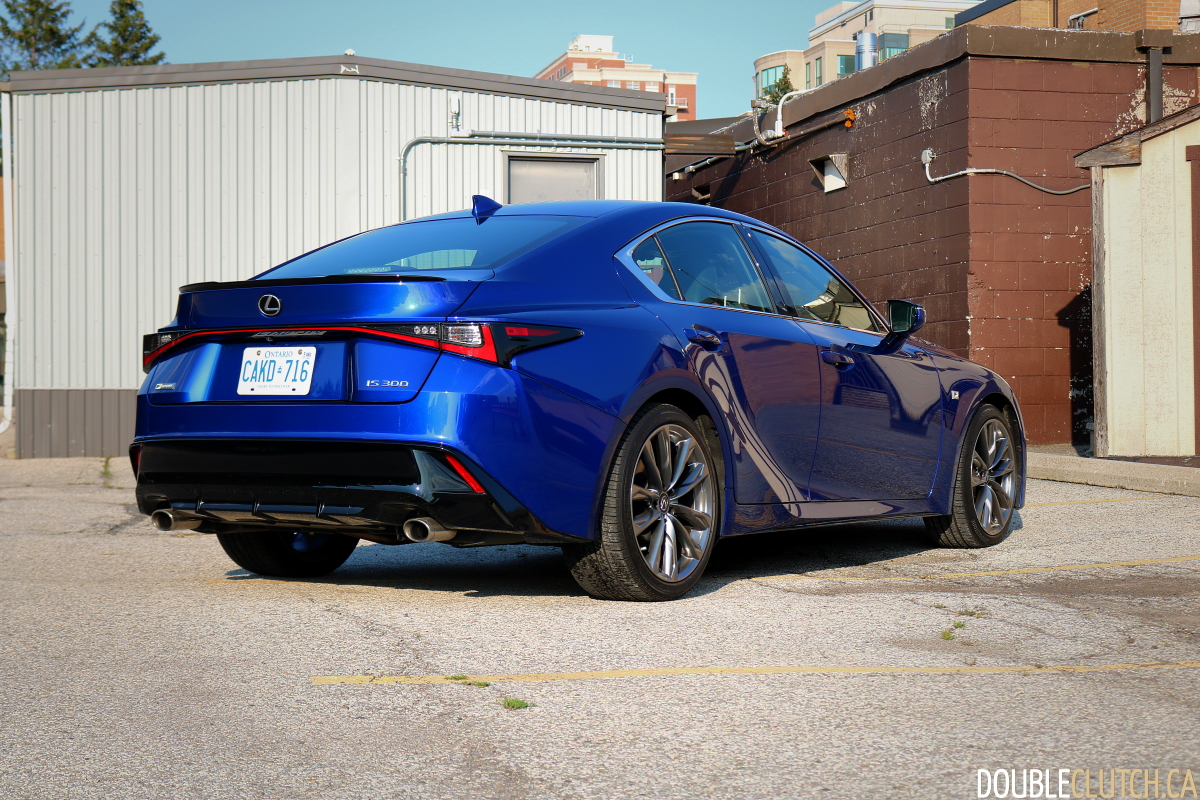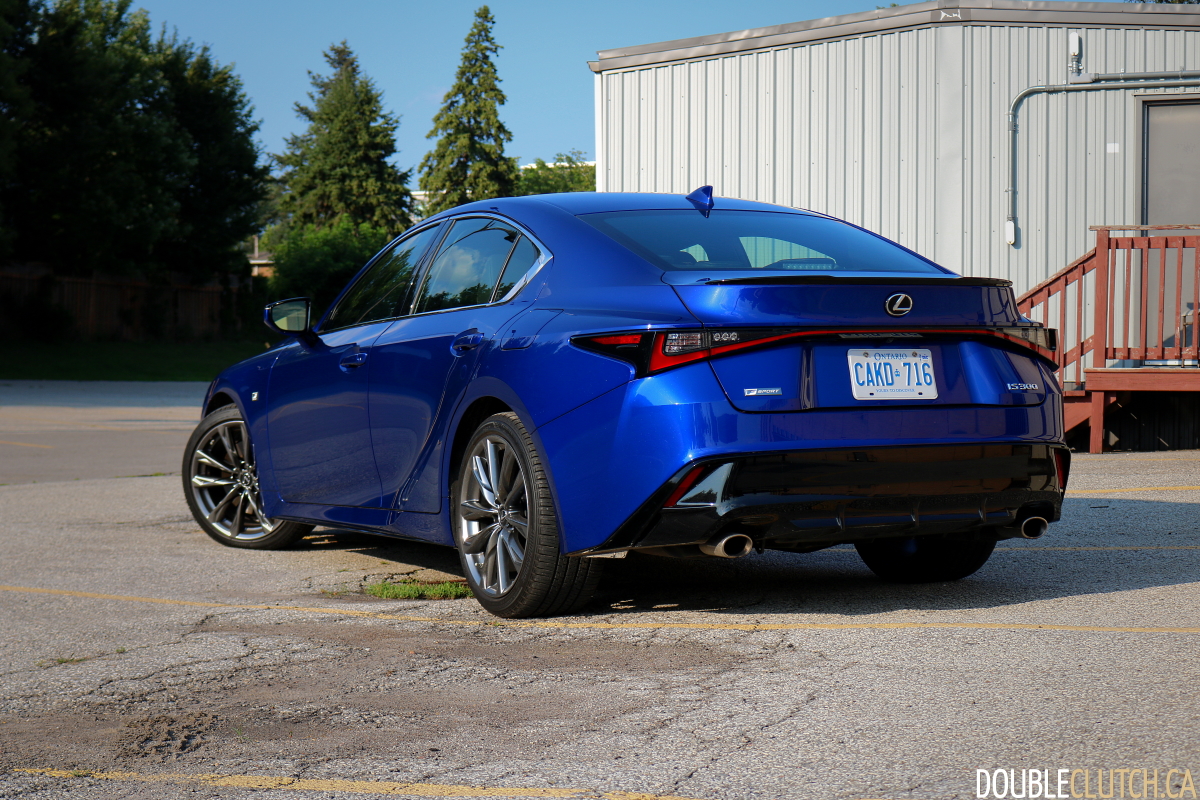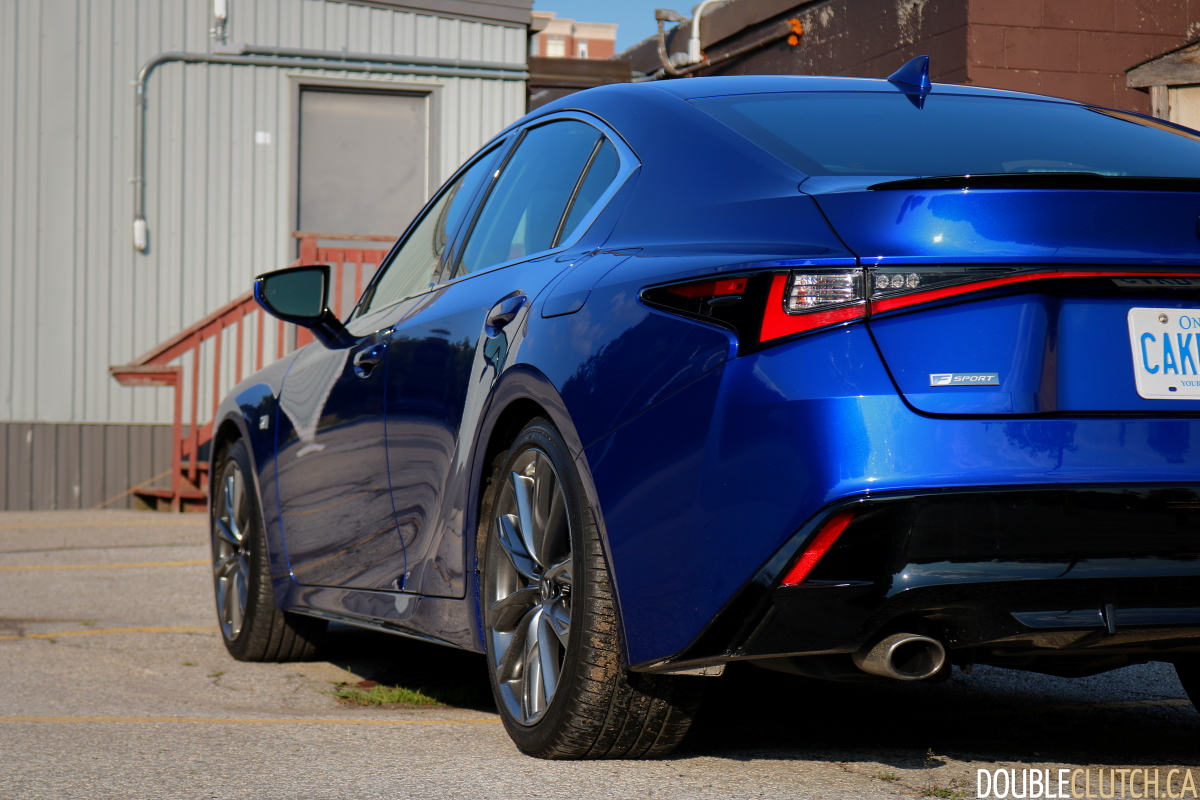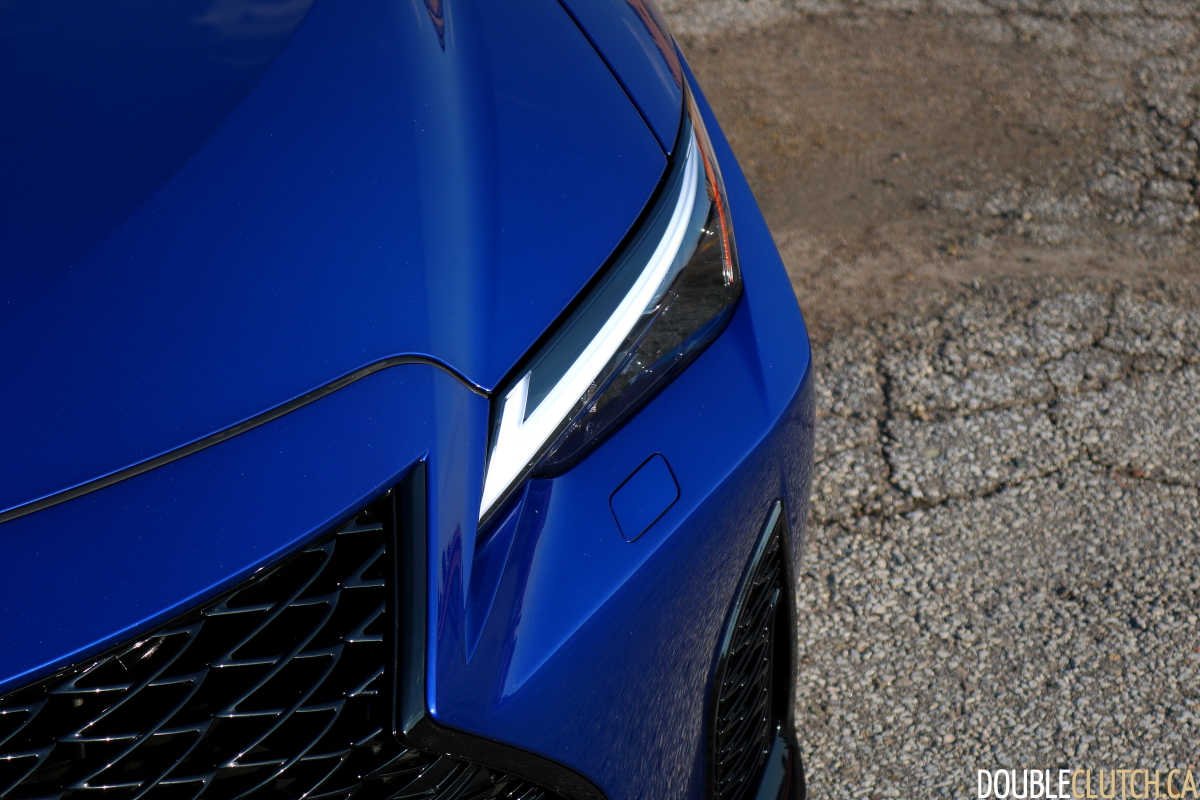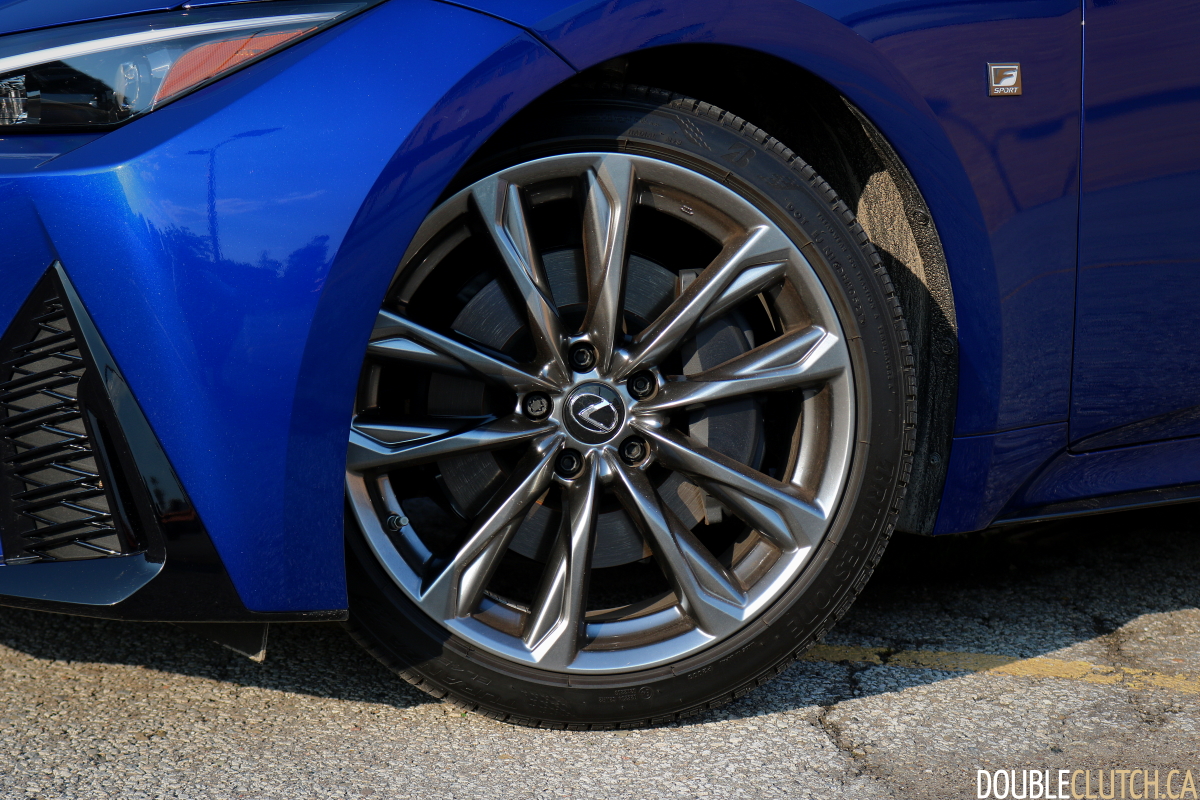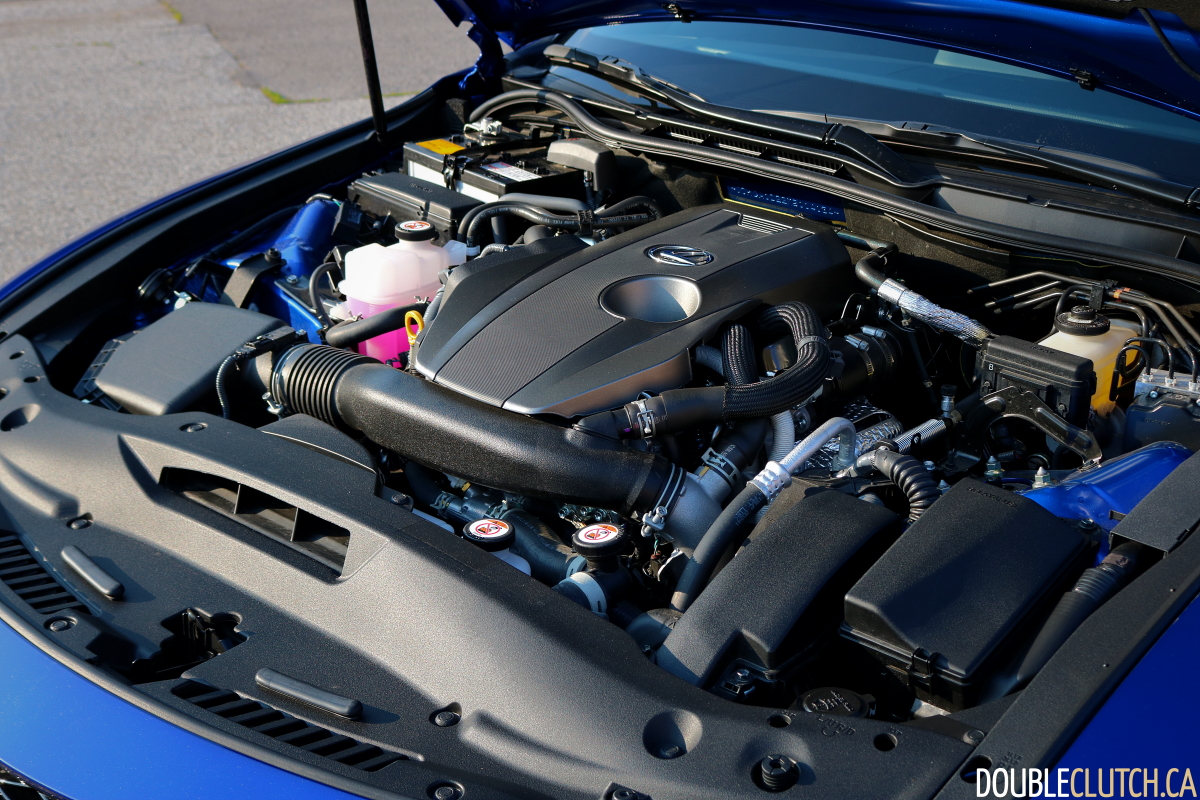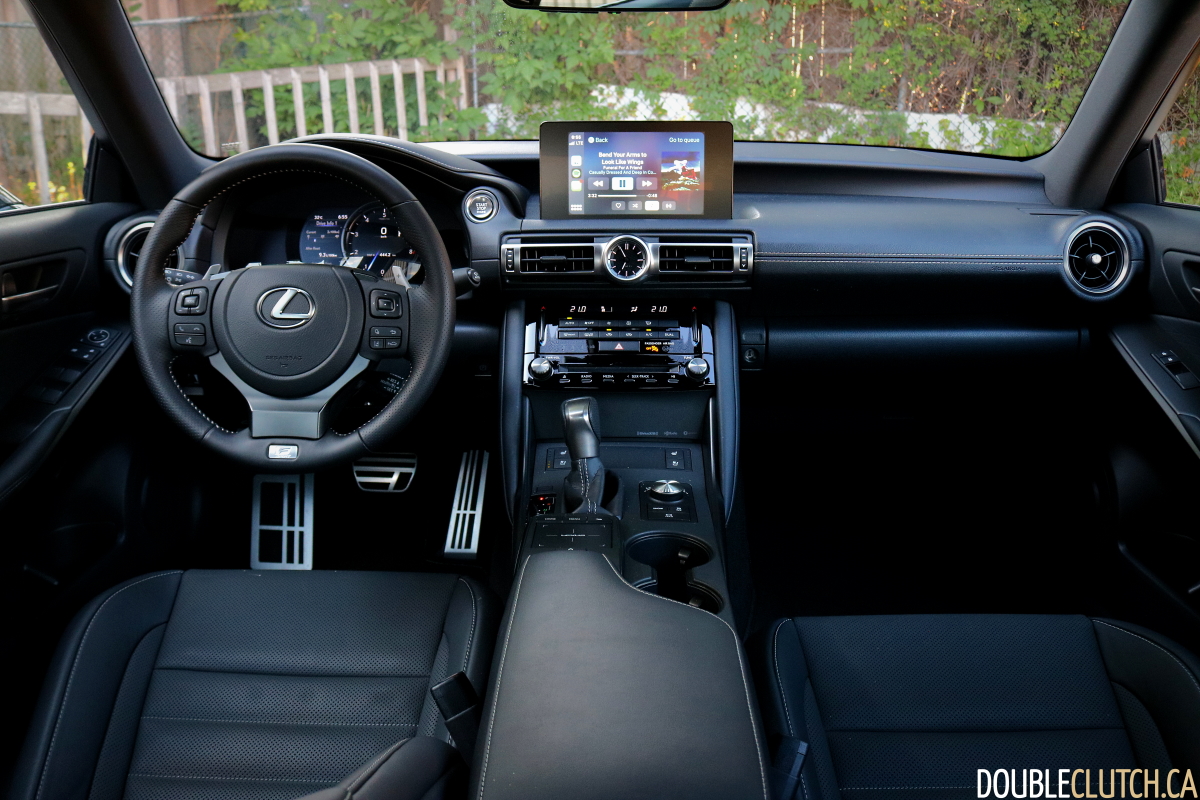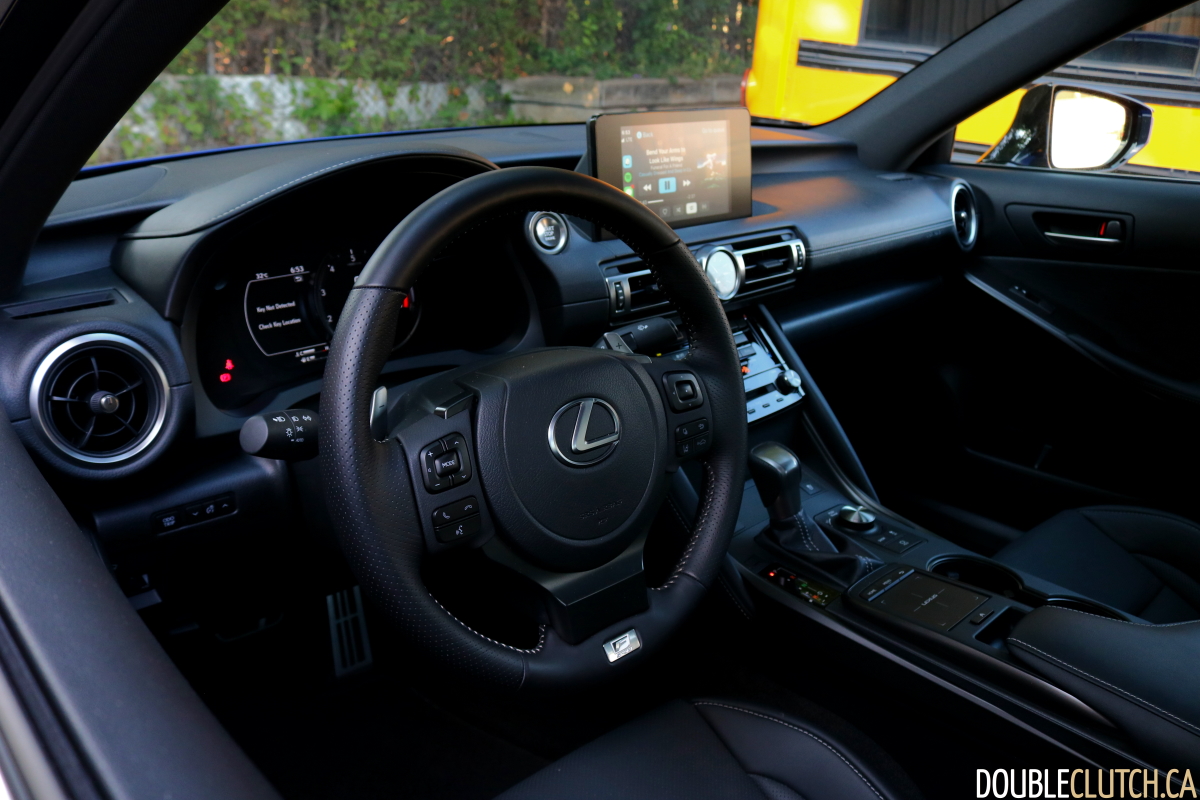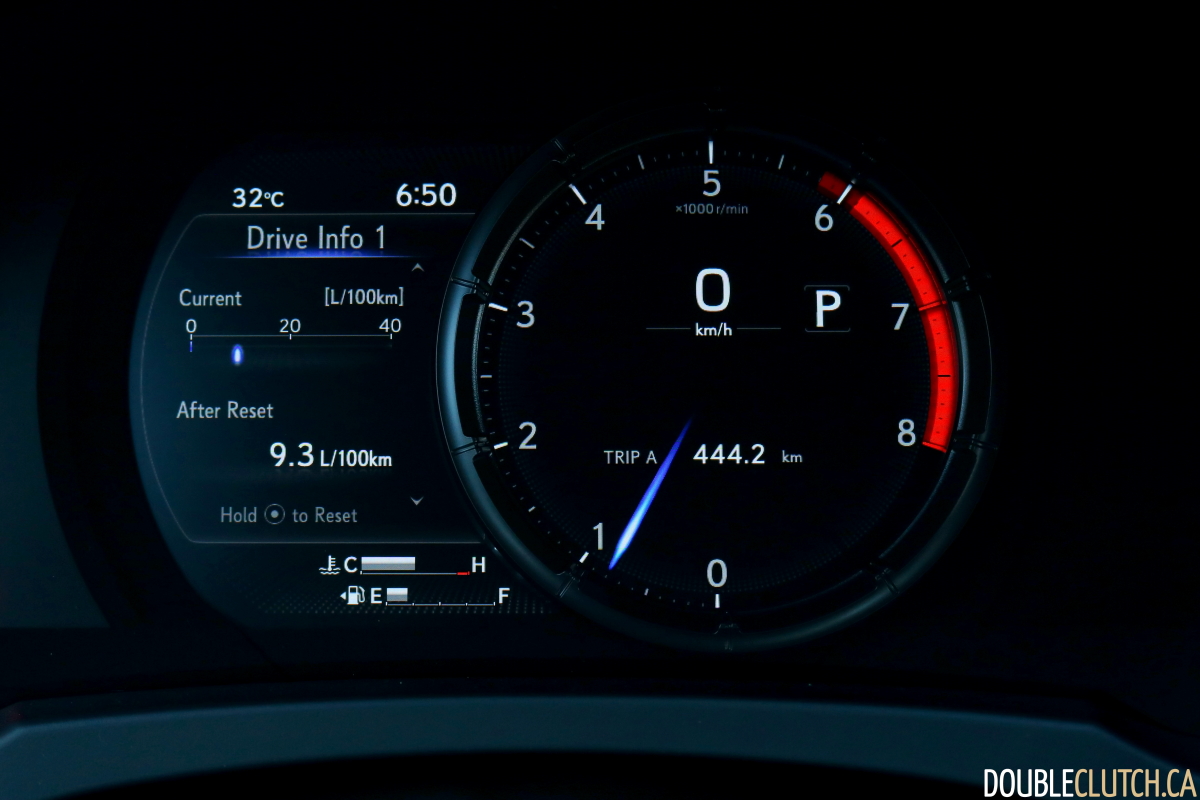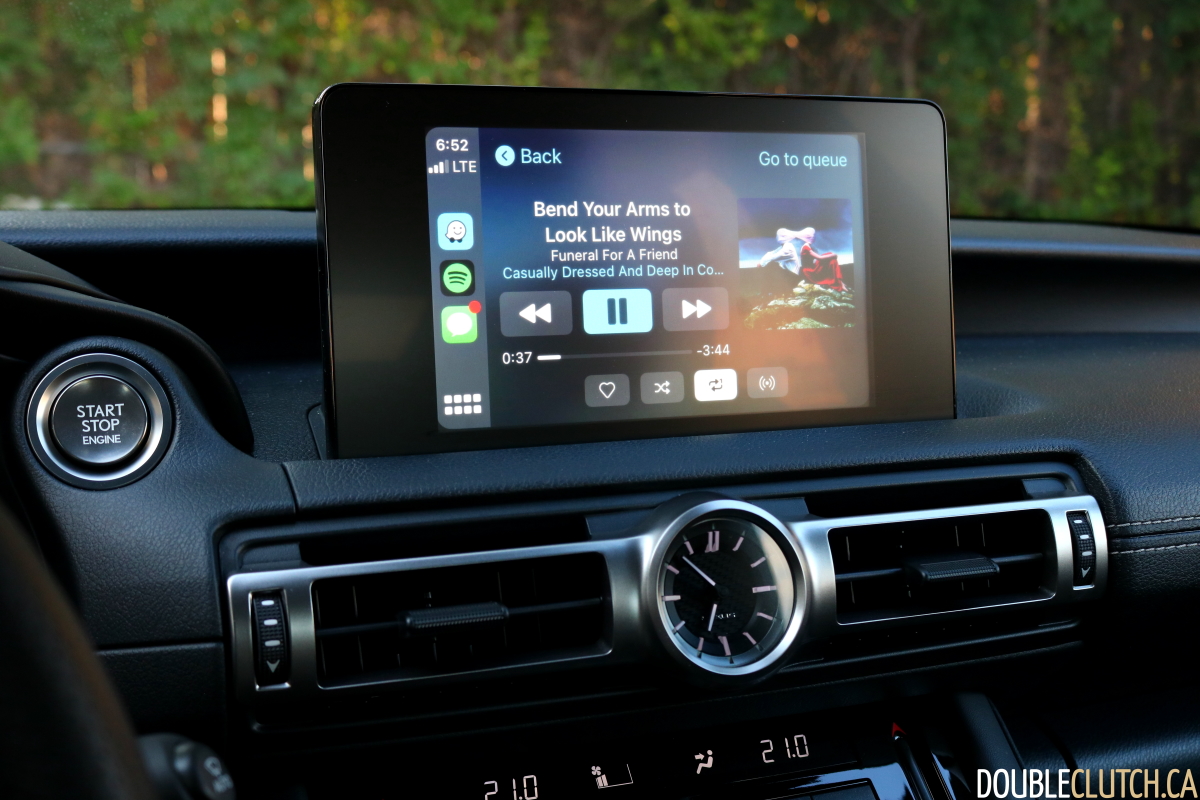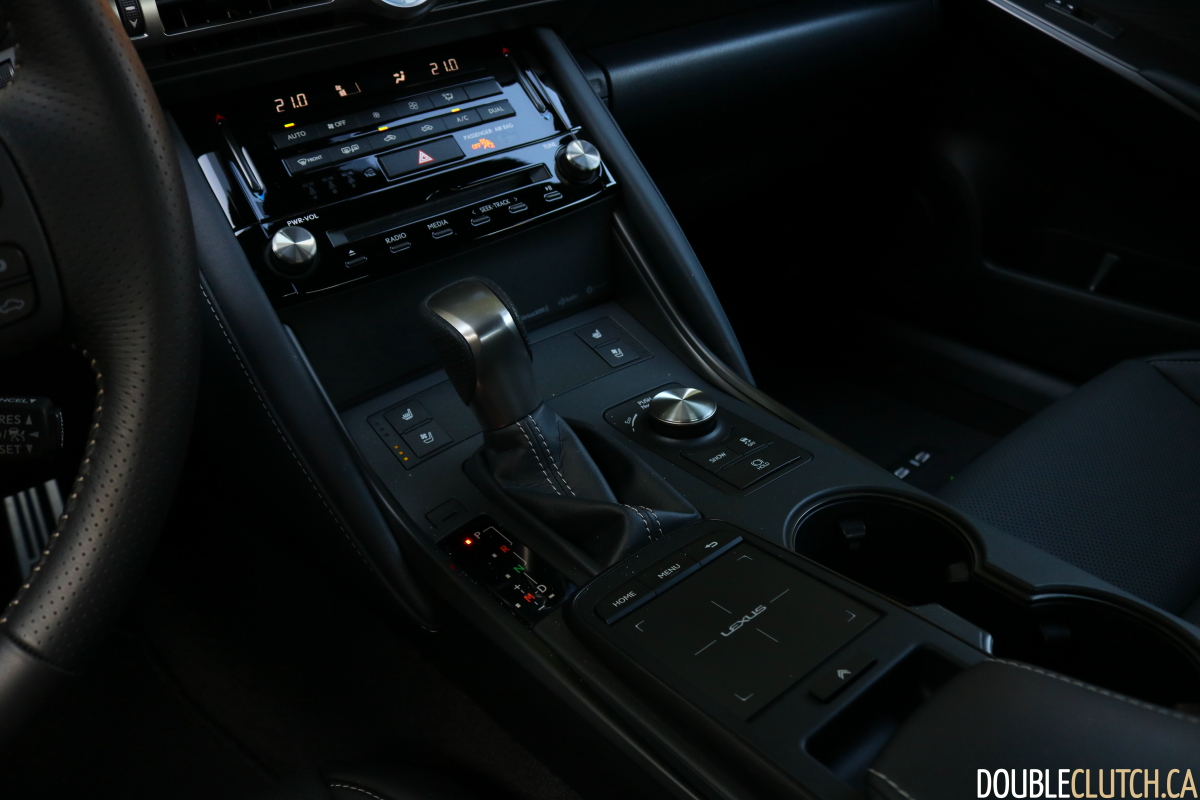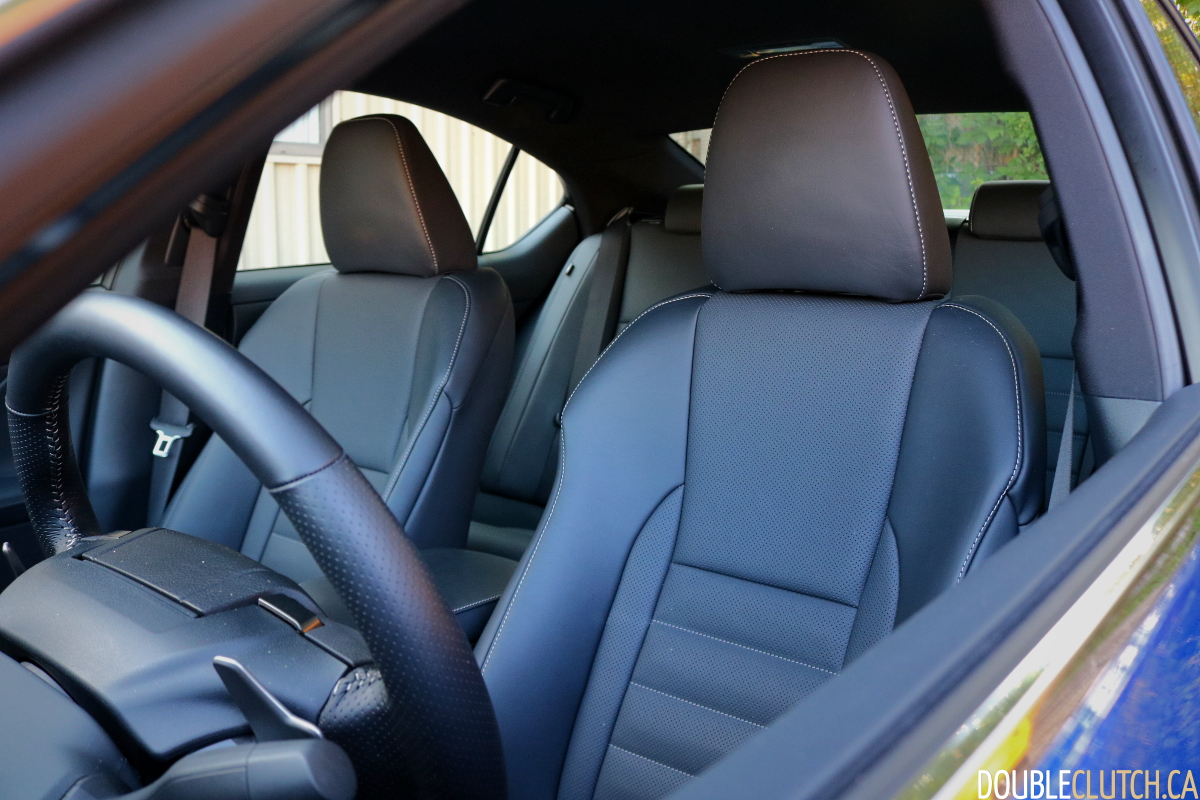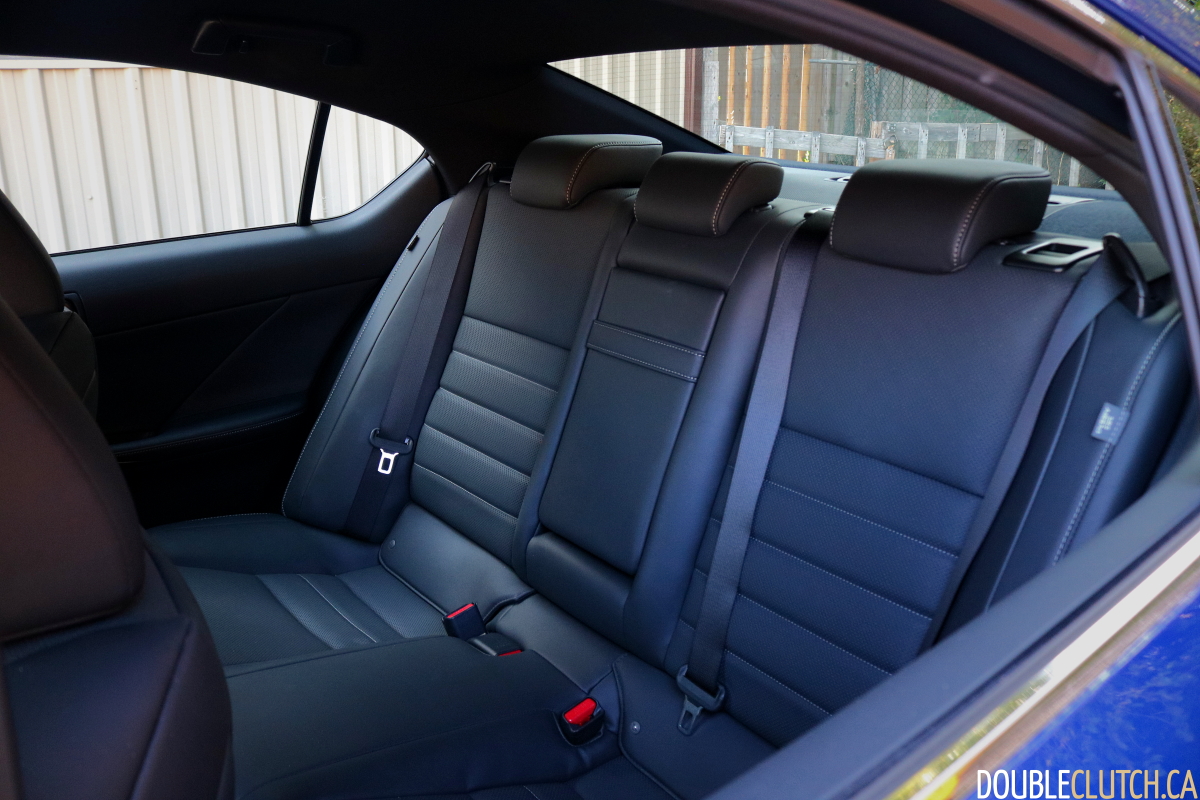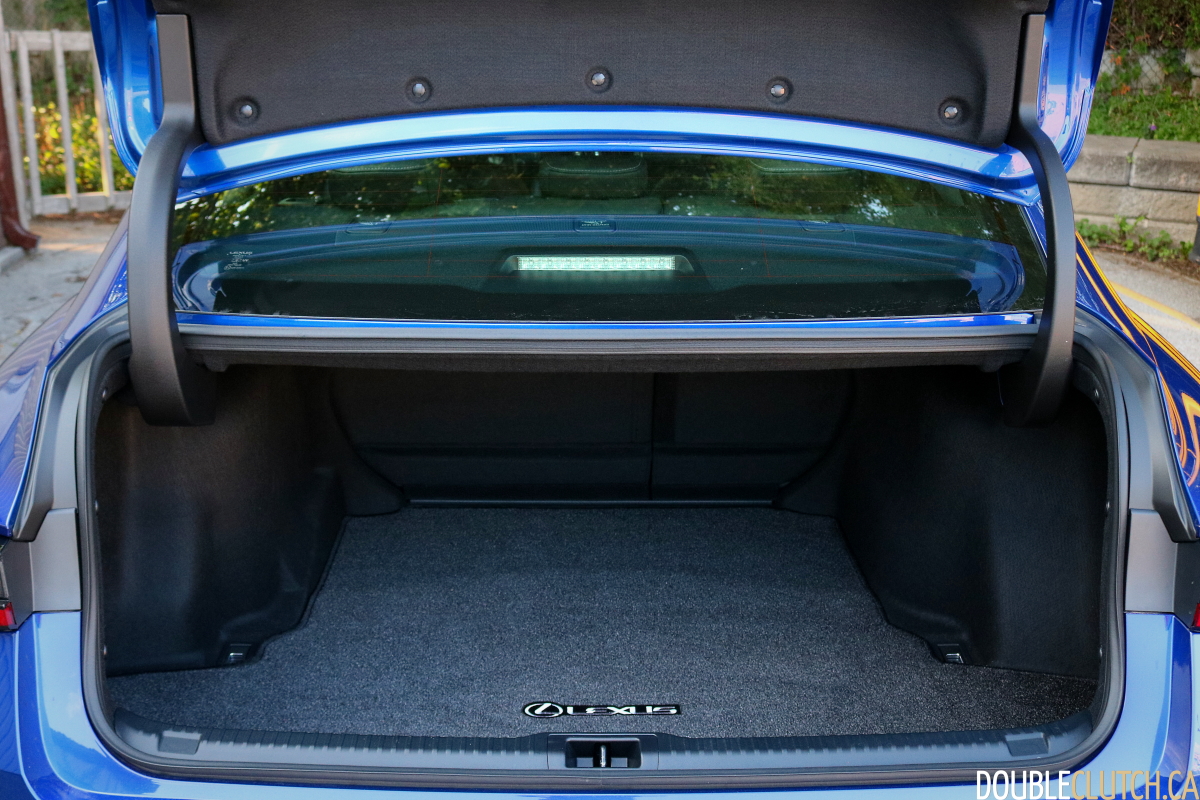The rear-wheel-drive entry-level sports sedan appears to be a dying breed. With much of the Canadian market so obsessed with ever-bloating features like panoramic sunroofs and all-wheel-drive, few options exist for drivers who want to experience both the purity of a thoroughbred rear-wheel-drive platform and the practicality of a sedan. Happily, a handful of options still exist. This is the 2021 Lexus IS 300 F-Sport and it is simply brilliant.
With the popularity of sedans waning as a result of ever-increasing crossover sales, Lexus have elected to keep it conservative with the latest iteration of their IS sport sedan. No new engines, no drastically updated interior, not even a new platform, just a new youthful skin shrink-wrapped over solid old bones. What a body it is, though. This car looks absolutely sensational. The L-shaped daytime running lights have been merged with the headlights for a cleaner front end, the sheetmetal on the sides has been pulled taut at the hips to make the whole car look longer and the trunk lid has been raised and narrowed so that the massive rear haunches can really sing. As far as I’m concerned, this is the best-looking sedan ever to come out of Japan.
Adding to the IS 300’s already gorgeous looks is the F-Sport appearance treatment that’s standard on all Canadian-market rear-wheel-drive models. It ups the exterior’s ante with a special grille, revised air intakes, a black spoiler, tasteful badging and a set of very attractive 19-inch alloy wheels. A subtle yet stunning visual package that really helps accentuate the best aspects of the IS.
On the inside, things are largely the same as they’ve ever been. Apart from new air vents, there are very few cues that the interior of the IS 300 isn’t from 2014. However, this isn’t entirely a bad thing. There are plenty of physical controls to augment the eight-inch touchscreen infotainment system, the shifter is a straightforward mechanical affair and those of us still clinging onto our USB-A cables won’t be left out in the cold. What’s more, Lexus’ trademark digital cluster with a moving physical bezel is still on offer here, which is good because it’s one of the coolest gauge clusters of all time. Sometimes old is good.
In fact it almost seems that in lieu of a new dashboard, Lexus have simply gone wild on the standard equipment list. The curious omission of a sunroof aside, Canadian-market IS 300s come equipped with heated and cooled sports seats that will fit your body like your favourite pair of jeans, projector headlamps to turn inky night to daylight, automatic power windows, keyless entry and start, satellite radio and dual-zone climate control. Heaps of kit, most of which is optional on many competitors. Audio comes exclusively in the form of a ten-speaker stereo, no Mark Levinson on this model. While audiophiles will be disappointed, the standard stereo is just crisp enough to go toe-to-toe with the optional Burmester system in the Mercedes-Benz C-Class.
Another perk of choosing sports sedan purity is that unlike in other IS models with all-wheel-drive, the rear-wheel-drive IS 300 won’t hump you. Wait, what? See, to turn a rear-wheel-drive car into an all-wheel-drive car, engineers have to install something called a transfer case. This is essentially a box that takes some of the power going to the back, turns it 180 degrees and sends it to the front. Lexus, in their infinite wisdom, have decided to place this box right in front of ther driver’s seat, resulting in a hump in the floor. This isn’t so bad if you’re short but taller drivers of AWD IS models will find that the hump interferes with where their right calf should be. Since the rear-wheel-drive IS 300 doesn’t need a transfer case, there is no hump in the floor. A huge boon for drivers of taller stature.
Powering the IS 300 is a two-litre turbocharged four-cylinder engine making 241 horsepower at 5,200 RPM and 258 lb-ft. of torque at 1,650 RPM. In today’s power-rich automotive landscape, 241 horsepower almost seems like it should the output of an unusually zesty hedge trimmer rather than a sports sedan. While a jaunt from a dead stop to highway speeds in the upper six-second range isn’t exactly slow, the IS 300’s forward motivation feels neither electric nor relentless. This is partially because the turbocharged four-cylinder engine falls on its face at high RPMs like a child on a scooter uncerimoniously hitting a pebble and partly because we are all very spoilt and ungrateful.
The fact that we’re all hurricane drunk off of horsepower really is a shame because the IS 300’s fairly normal power output means that manual mode in the eight-speed automatic gearbox is genuinely usable all of the time. Yes, the gates are set up back-to-front, but the paddle shifters still feel great and the ratios are close enough that you can manipulate the power band into delivering exactly what you want, be it riding the low-end torque for smooth acceleration or kicking it into a much lower gear for the satisfaction of really revving out the engine.
While the IS 300 would be even more fun if it had a proper manual gearbox, truly using the manumatic mode is an underappreciated way of really getting the most from the car. Another benefit of the IS 300’s sensible power output is that fuel economy is equally sensible. I averaged 9.3 L/100km over a week of mixed driving, an excellent result that’s roughly in line with the government’s combined rating of 9.5 L/100km.
The real star of the show here is the IS 300’s ride and handling. Anything can be fast in a straight line with enough horsepower, but sports sedans are revered for the way that they carve up twisty roads. As such, Lexus have increased the number of welds on the new IS 300’s bodyshell, fitted lighter coil springs and control arms, installed the latest and greatest in damper technology and tuned the whole thing on their formidable Shimoyama test track.
The results of all this are nothing short of greatness. The bodyshell feels as rigid as anything out of Germany and the ride quality is taut yet still extremely comfortable over all but the most broken asphalt. There’s absolutely gobs of grip on offer and the overall handling balance is neutral, with body roll kept very well in check.
The steering is light yet well-weighted with a natural build-up of effort as cornering forces increase. With the front wheel unencumbered by driveshafts, there’s a thin, delectable syrupy layer of added precision that’s lovely to have and difficult to fault. This sweetness manifests itself as bulletproof confidence for charging down on-ramps and shooting out of roundabouts, a level of tactility that encourages proactive driving. It’s the pot of gold at the end of the sports sedan rainbow that’s led legions of drivers to leap into Mercedes-Benz 190Es, BMW 325is and Infiniti G37s throughout the decades.
So how much does all this excellence cost? Less than you’d think. There’s only one trim of rear-wheel-drive IS 300 on offer in Canada and it stickers for $42,950. From there, the only optional extras are two shades of paint, Infrared and the Ultrasonic Blue Mica 2.0 as seen here, each costing an additional $650. Put it all together and that’s not a lot of money for what is a lot of car. Only the Cadillac CT4 has a lower starting price and it doesn’t have as much style as the IS 300. Moreover, the IS 300 is priced within spitting distance of a well-equipped Toyota Camry or Honda Accord. A blue-chip sports sedan for blue light special pricing? Sign me up, please.
In conclusion, the 2021 Lexus IS 300 F-Sport is a gorgeous, well-equipped, satisfying to drive sports sedan that’s priced so that actual people can afford it. If you’re shopping for a new car and value a high-end experience that’s great to drive and still quite practical, you owe it to yourself to take one of these for a spin.

